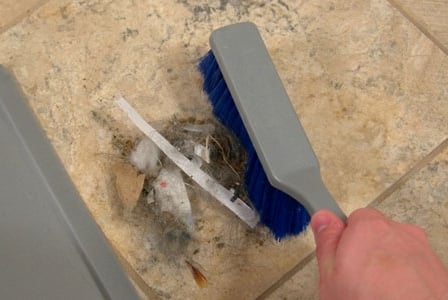
Whatever room youre presently in, youre stirring up 37 million bacteria in the air every hour. Researchers have found that the major source of bacteria is floor dust.
A new research study by Yale University engineers has provided me with the motivation I need to tackle my housecleaning—with a vengeance. Theirs is the first study to document how much bacteria is stirred up into the air when one person occupies a room.
We may not always turn heads when we walk into a room, but we always have an effect on bacteria—our mere presence propels approximately 37 million of those microscopic critters into the air every hour! Most of the material that we stir up is detritus left behind by previous occupants.
Dust up
“We live in this microbial soup, and a big ingredient is our own microorganisms,” said Jordan Peccia, associate professor of environmental engineering at Yale . “Mostly people are re-suspending what’s been deposited before.”
Researchers measured and analyzed biological particles in a university classroom over an eight-day period, four days when the room was in use and four days when it was empty. The windows and doors were kept closed at all times.
Size of particles matters
Researchers categorized particles by size. They found that human presence resulted in “substantially increased airborne concentrations of bacteria and fungi of various sizes.” The size of these particles proved to be especially important because it determined whether they were filtered from the air or whether they lingered and were recirculated.
Eighteen percent of all bacteria in the room came from humans (as opposed to plants and other sources). Floor dust turned out to be the major source of bacteria that we breathe.
Dust may contain
- human skin scales
- feces of dust mites and insect parts
- soil particles
- fungal spores and pollen grains
- clothing and carpet fibres
- rubber from car tires
Carpets are culprits
Peccia confirmed that carpeted rooms contain “especially high amounts of microorganisms”, but he cautioned that doesn’t mean you necessarily need to remove them. Only 0.1 percent of the microorganisms that live indoors are infectious. However, “all those infectious diseases we get, we get indoors,” he said.
Makes me want to throw open my windows and go outdoors for a walk—after I eradicate the dust bunnies under my bed.


